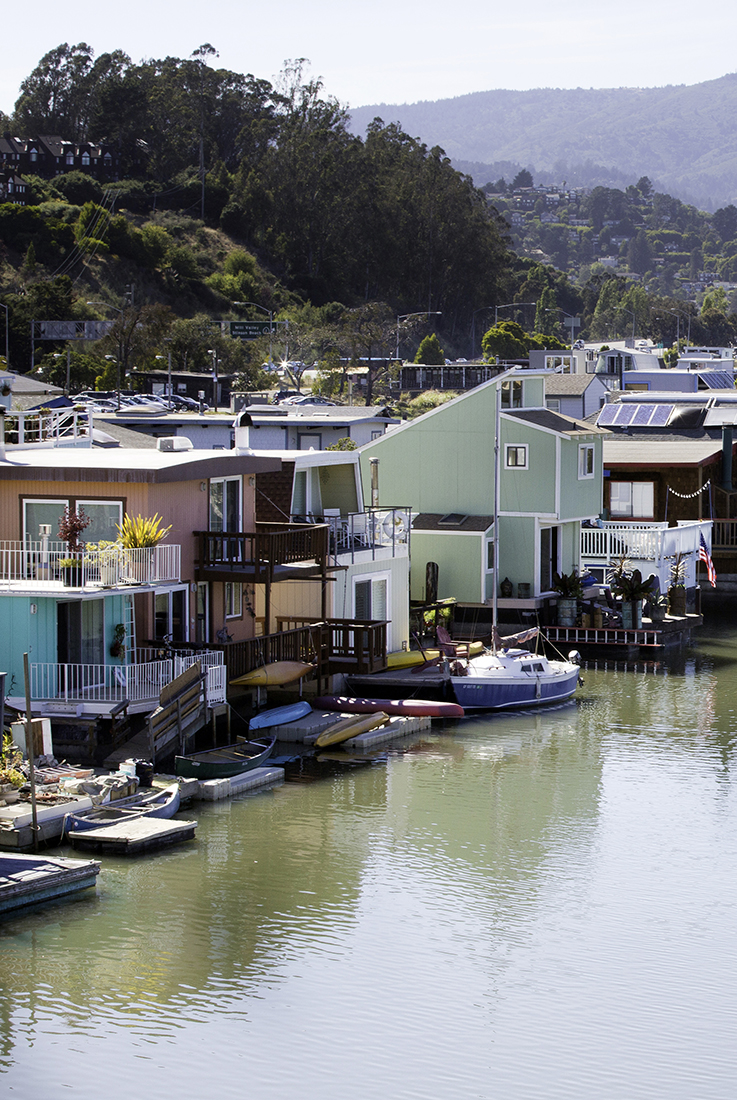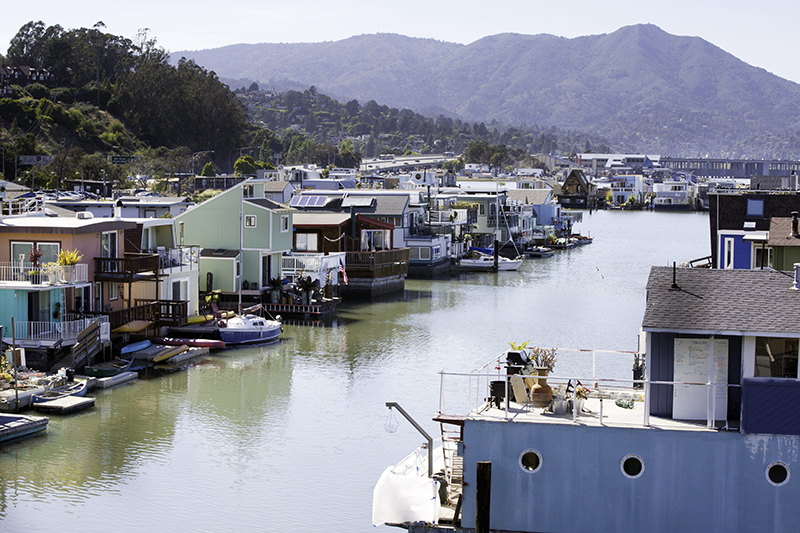
LET’S BE CLEAR: the colorful homes we see dotting the docks of Sausalito are not houseboats; they’re floating homes. The difference? Floating homes have no motors, and if they are to move, they need to be towed. Since the 1880s Richardson Bay has been home to people living on the water on most anything that floats. Today there are about 500 floating homes off nine different docks (Issaquah, Liberty, Kappas East and West piers, South Forty, A, 6 ½, Main and Yellow Ferry). Since the 1960s when the docks were established, the floating home community has attracted those seeking a less conventional way of life.
Throughout local history, creative types and free spirits have settled this area, and these days, from size to cost to the people who live in them, the homes are as varied as their hues. While several quaint residences measure around 300 square feet, the Dragon Boat swallows them whole at a whopping 4,000 square feet — a size that easily rivals modest mansions. The most expensive home sale? That would be $1,795,000. The most affordable recent purchase was a more attainable $300,000. Owner-to-renter ratio hovers at about 70 percent, although that varies by dock — as do monthly rents. The range is rather broad, from $800 to $1,400.
Though these aren’t traditional homes, the inhabitants certainly aren’t roughing it, and the work being done at Gate 6 to upgrade the parking lot speaks to the creature comforts that are out here to enjoy. It seems the people who call these docks home really get to have it all, so we set out to photograph residents and their digs in order to learn more about the floating life. If you want to visit the homes for yourself, be sure to check out this year’s Floating Homes Tour on September 12.
For more photos, check out the gallery at the bottom of the page.
DOL KHYIM
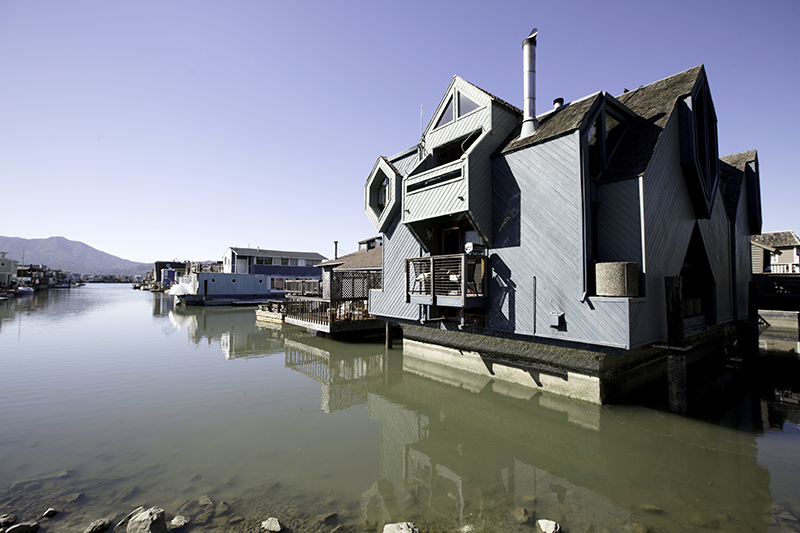
LOCATION Kappas East Pier
OWNERS Wilford Welch and Carole Angermeir
SIZE 4,000 square feet
YEARS LIVED ON BOARD 14
THE DOL KHYIM’S owners don’t know who the original architect was, but in 2000 they hired wel l-known green architect Sim Der Ryn (who back then also lived at the docks) to remodel the 1975 boat. The work took a year to complete. Why were they drawn to this life? “We were attracted to life on a houseboat because there is a great sense of community in a nation that is often losing community,” says Wilford Welch. “And secondly, we are close to the natural world, a reminder of who is in charge.”
THE FAIRY TALE
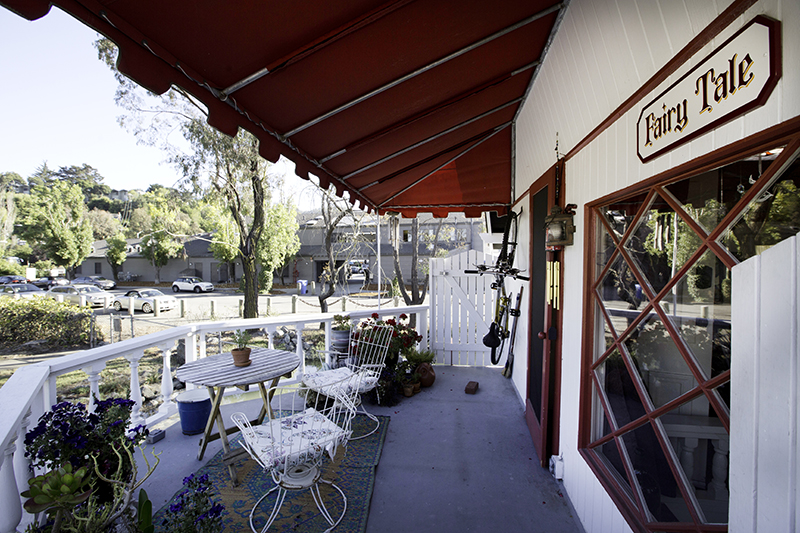
LOCATION Kappas West Pier
OCCUPANT Julie Durbin
SIZE About 1,000 square feet plus storage space in the external hull
YEARS LIVED ON BOARD Almost two, but has been in the community for 12
The architect for this boat was in the U.S. Army. Originally built for World War II — likely marking Fairy Tale as the oldest of these local vessels, definitely the oldest on West Pier — it served in 1942 as a barrage balloon carrier outside the Golden Gate, where it deployed a distinctive defense tactic: the crew floated balloons up attached cables, so that any Japanese aircraft flying into the cables would be destroyed. The balloons were also designed to conceal activity on the water from any enemy aircraft overhead. Fortunately, the Japanese never attacked the Golden Gate. The boat was eventually sold to civilian owners, who added the top of the boat in 1968 and the concrete hull in 1992 after rust from a nonworking motor — unlike most of the floating homes, this boat did start as a working craft — damaged the inside of the external hull on the stern. The owner chose the name Fairy Tale for a simple reason: the boat looks like something from a storybook. “There was even a boat naming ceremony last summer to make it official, complete with lots of champagne that was enjoyed and thrown in the four directions of the wind,” says Julie Durbin, a tenant. Also, a silver dollar was hidden somewhere on the boat for good luck. Durbin cherishes dockside life for the way residents look out for each other and their community. “There’s also an attitude of paying it forward,” she notes: every Fairy Tale owner has done something to make the home better. The current owner put on a new roof and installed a washer and dryer.
ISSAQUARIAM

LOCATION Issaquah Dock
OCCUPANT Mari Steeno
SIZE About 1,000 square feet
YEARS LIVED ON BOARD Three
Mari Steeno is the first renter after the new owners' remodel. She named the vessel the Issaquariam for the dock location and to evoke marine life. “Living on a floating home is a unique experience,” she says. “The only constant in our lives is change, and every moment on the water offers changing light, sounds, smells, tides, temperatures and movement. You can be as private as you like or be involved in numerous ways in the community. Very few folks leave after experiencing the lifestyle.”
THE TRAIN WRECK
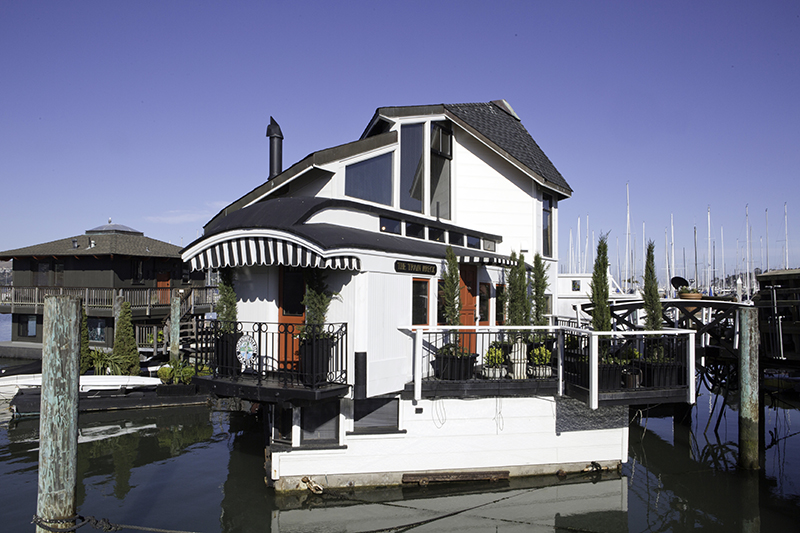
LOCATION South Forty Dock
OWNERS Henry and Renee Baer
SIZE 2,000 square feet
YEARS LIVED ON BOARD About 24
The Train Wreck started its long and colorful life in 1889 not as a boat, but as railway car No. 41 in the San Francisco and Northern Pacific Railroad system. In 1907, through a merger, it became part of the rolling stock of the Northwestern Pacific Railroad and was renamed car No. 180. By 1936 it had been retired and sold, becoming part of a duplex in Mill Valley. It remained landlocked until 1979, when it was finally purchased, cut into two sections and placed on a concrete hull to form the floating home. Since then, two successive owners have lovingly restored and maintained it, and the current co-owners have made their mark, notably with interior designer Renee Baer’s tasteful artifacts and antiques and dentist Henry Baer’s wine rack made with dental tools. Today the passenger section serves as dining room and the baggage section is the bathroom and laundry room. “We wouldn’t want to live anywhere else,” Henry says. “We love it and the houseboat community.”

